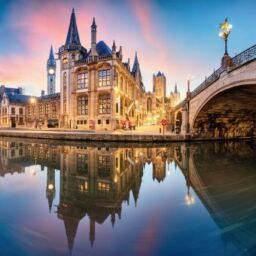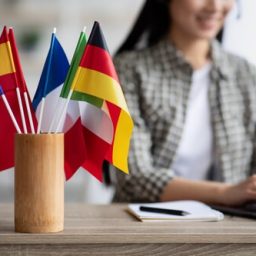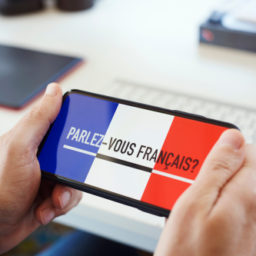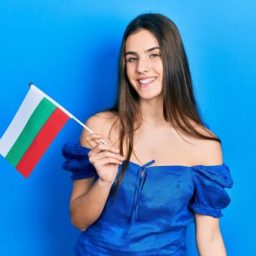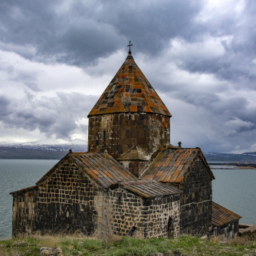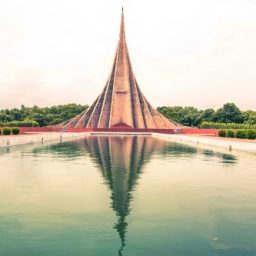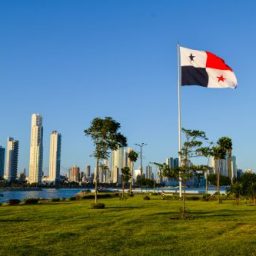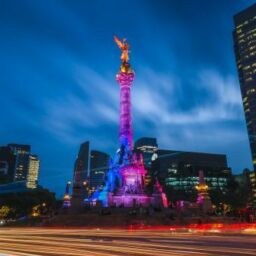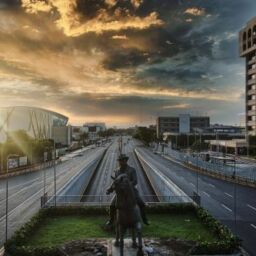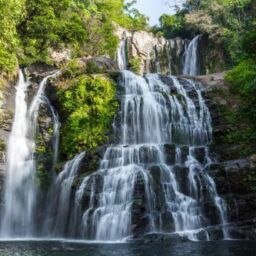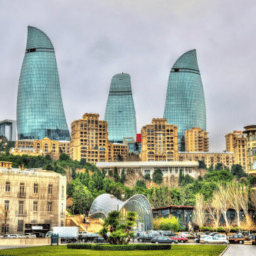

The Moroccan coast can be seen with the naked eye from Europe (to be precise: from Spanish Andalusia), whenever the weather permits. At the narrowest point of the Strait of Gibraltar, the distance between our continent and this exotic country is just several kilometres.
After crossing the Strait of Gibraltar, everything changes. The architecture, people, way of living and scenery look entirely different. The languages you hear aren’t the same: Spanish and English transform into Arabic and… If you are curious, what is the mother tongue of Moroccans, we invite you for a short journey to this fascinating country!
Contents
Morocco: the pearl of the Maghreb
Morocco is located in north-western Africa on the coasts of the Atlantic Ocean and the Mediterranean Sea. It is adjacent to Algeria, Spain and the disputed territory of Western Sahara. Its area covers 446,550 square kilometres. The country’s capital is Rabat. One of his most important buildings is Dar El-Makhzen Palace, the residence of the Moroccan King – Muhammad VI – and his family.
Morocco attracts people with its oriental architecture, aromatic kitchen (have you already tried the legendary combination of lamb with pickled lemons?), vast desert and exotic culture. The country has a significant number of international airports, so visiting tourists can choose from many cities: cosmopolitan Casablanca, royal Rabat, soulful Fez, colourful Marrakesh or seaside Agadir.
The population of Morocco has reached almost 38 million people (source: worldometers.info). A significant part of the country’s residents is of Arabic or Berber origin; some of them identify as Gnawa or Haratin. There are many inequalities in living standards between people from big cities and rural areas. Almost 100% of the population profess Sunni Islam.
Languages of Morocco
There are two official languages in Morocco: Arabic and Amazigh (Berber). French is also in use, especially in the tourist and economy industry. Due to historical and business reasons, the northern part of the country has a considerable number of Spanish speakers.
Moroccan Arabic (Darija)
Standard Arabic (Fusha) is considered a prestigious language in Morocco. However, Moroccan Arabic (Darija) is more widespread. It is known to the majority of the population (from 80 to 90%). Many speakers of Berber languages learn it as a second language (source: worldatlas.com). This dialect resembles the variations of Arabic present in Mauritania, Algeria, and Tunisia. It shares around 70–75% of the vocabulary with Literary Arabic.
For a long time, people didn’t write in Darija; for that purpose, Literary Arabic was used. The first work in Moroccan was a zejel titled Mala’bat al-Kafif az-Zarhuni by Al-Kafif az-Zarhuni dating back to the 14th century. Until today, there is no standard written form. In online communication, the Latin alphabet is used. Those sounds that are not present in English or French are substituted with numbers.
A large portion of vocabulary entered Darija from Literary Arabic, Amazigh, French and Spanish. Let’s take a look at some examples of loanwords.
Loanwords from Literary Arabic
- kəlb – dog
- qəṭ – cat
- bħar – sea
- kla – eat
- ħub – love
- dhab – gold
- ras – head
- rajəl – man
- mra – woman
Loanwords from Amazigh
- xizzu – carrots
- lalla – lady
- mezlot – poor
- šlaɣem – mustache
- bra – letter
- deġya – hurry
- dmir – hard work
Loanwords from French
- forshita/forsheta – fork
- telfaza – television
- radio – radio
- rompa – roundabout
- portable – cellphone
- parisiana – baguette
- tran – train
- serbita – napkin
Loanwords from Spanish
- kuzina – cuisine
- simana – week
- karrossa – carriage
- l’banio – toilet
- playa – beach
- karratera – road
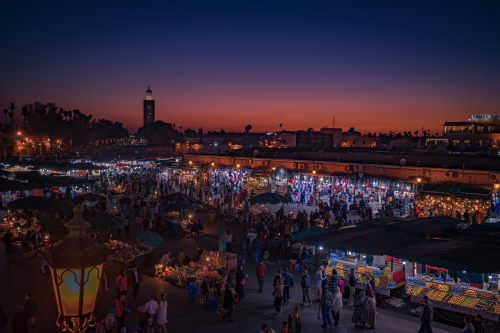
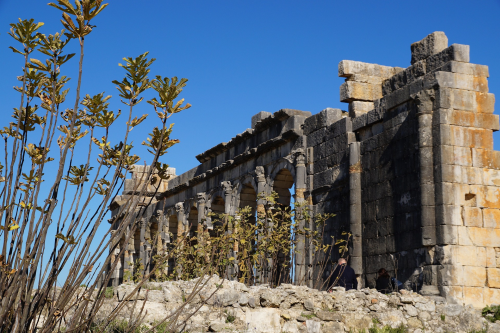
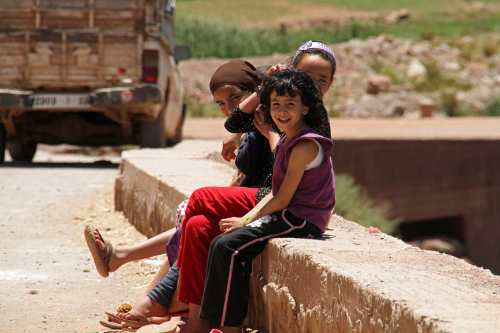
Amazigh
Amazigh is a different name of the Berber language family used in the countries of Maghreb. In 2011, it got recognized as the second official language of Morocco. It is hard to tell the exact number of its users, as the sources give very different data. This is probably because there are usually no questions about language background in censuses conducted in Arab countries. In Morocco, Amazigh is present normally in the family context. In official situations, Darija or Standard Arabic are preferred.
French
French is a prestigious language in Morocco. It has been traditionally used in administration, business relations and diplomacy. Some schools offer education in the French language. The country belongs to the International Organization of Francophonie. It is estimated that around 35% of Morocco’s population knows French on an advanced level (source: Morocco World News) and the majority understand texts written in that language.
Spanish
Due to historical reasons, Spanish is present mainly in the northern part of Morocco (and the disputed territory of Western Sahara). It is even possible to watch television broadcasting in this language. In the survey conducted in 2005 by Barcelona Centre for International Affairs, almost 22% of citizens declared the ability to speak Spanish.
Are you in need of translators from many languages: Arabic, English, French, Spanish and others, as your company operates in a multicultural environment? If you strive to find the best professionals in the given field, contact us.
Useful Moroccan phrases
If you are fluent in French, daily communication in Morocco won’t be a problem for you. Otherwise, we recommend learning basic phrases in Darija, which will help you during your stay in Casablanca, visit to the blue city of Chefchaouen or a desert trip from Marrakech to Fez.
- Sabah al-khayr – Good morning
- A response to “good morning” – Sabah an-nur
- Masa al-khayr – Good afternoon/ good evening
- A response to “good afternoon” or “good evening” – Masa an-nur
- Marhaban – Hello
- Tisbah ala khayr – Good night
- Bislama – Goodbye
- Salamat – Bye
- Ki dajra? – How are you?
- Lebes alik? – Is everything okay?
- Aafak – Please
- Szukran bzeef – Thank you very much
- La szukran aala łażib – You are welcome
- Smhli – Excuse me
- Bon szons – Good luck
- Mabruuk – Congratulations
- Maa salama – Have a good trip
- Sana saida – Happy birthday
- Bsahha – Enjoy your meal
- An answer to “enjoy your meal” – lajatek bsahha
- Ijeh – Yes
- Lla – No
- Wakha – Alright
- Fhemtini? – Do you understand me?
- Ma fhemtsz – I don’t understand.
Languages in the Moroccan literature
Multilingualism is a significant element of Moroccan reality, influenced by the country’s history and people. Since the 20th century, the number of languages used on its territory has begun to influence the creation of local literature. Arabic, Darija, Berber languages, French and Spanish are intertwined in the art. If you are interested in reading works by Moroccan authors, you may want to start with Mohammed Ben Brahim, Abdelkrim Ghallab, Mohamed Choukri, or Abdellatif Laabi.


